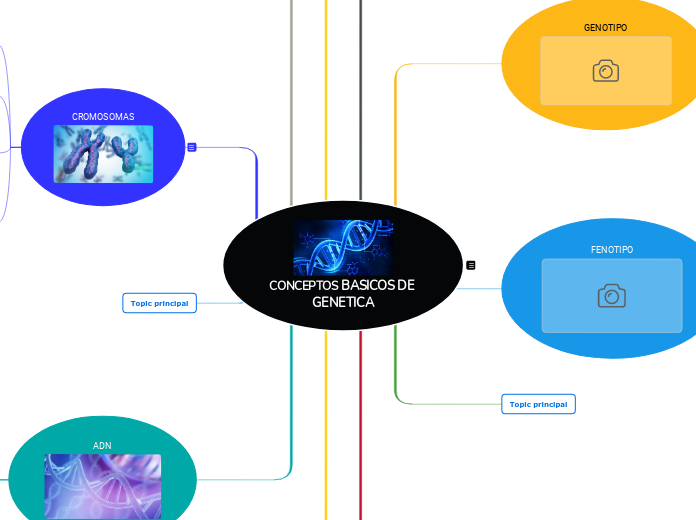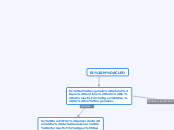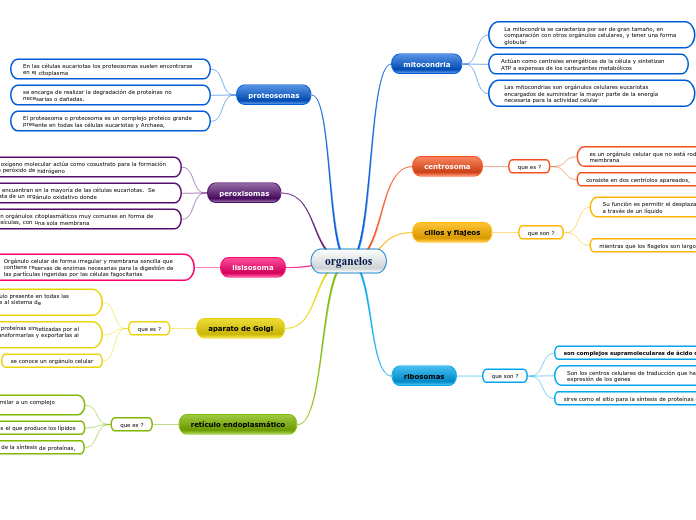CONCEPTOS BASICOS DE GENETICA

The Solar System is the gravitationally bound system of the Sun and the objects that orbit it, either directly or indirectly. Of the objects that orbit the Sun directly, the largest are the eight planets, with the remainder being smaller objects, the dwarf planets, and small Solar System bodies.
GENOMA
Saturn is known most for its rings.
Galileo Galilei first thought it was an object with three parts: a planet and two large moons on either side.
Not knowing he was seeing a planet with rings, the stumped astronomer entered a small drawing — a symbol with one large circle and two smaller ones — in his notebook.
The rings are made of ice and rock and scientists are not yet sure how they formed. The gaseous planet is mostly hydrogen and helium.
Saturn has over 150 moons and satellites. However, of these vast numbers of moons, only 62 are known and confirmed as moons.
Name at least 5 of these moons.
Es esencial para el funcionamiento celular.
Permite a la ciencia conocer mediante exámenes genéticos, que enfermedades podrá sufrir una persona en su vida.
Determina las características físicas y en parte psicológicas e intelectuales.
How long does it take for Saturn to go around the sun?
No existe una relacion directa entre la complejidad de un organismo y su cantidad de ADN.
Muchos de los genes que poseemos proceden de microorganismos primitivos, como virus y bacterias.
El tamaño de nuestra genoma es de 2.900 millones de pares de base.
Codifica toda la información necesaria para la expresión de los genes (genotipo) en las características visibles en el organismo (fenotipo).
A planet's day is the time it takes the planet to rotate or spin once on its axis.
Write down Saturn's day measured in Earth days.
Genoma Mitocondrial
37 genes
Genoma Nuclear
80 000 genes
¿QUE ES?
Es el conjunto de instrucciones genéticas que se encuentra en una célula.
En los seres humanos, el genoma consiste de 23 pares de cromosomas, que se encuentran en el núcleo, así como un pequeño cromosoma que se encuentra en las mitocondrias de las células. Cada conjunto de 23 cromosomas contiene aproximadamente 3,1 mil millones de bases de la secuencia de ADN.
ADN
Uranus is an oddball. It has clouds made of hydrogen sulfide, the same chemical that makes rotten eggs smell so foul.
It rotates from east to west like Venus. Its tilt causes extreme seasons that last 20-plus years, and the sun beats down on one pole or the other for 84 Earth-years at a time.
Methane in the atmosphere gives Uranus its blue-green tint. It also has 13 sets of faint rings.
FUNCIONES
Uranus has 27 moons that we know of. Five of the moons are large and the rest are much smaller.
Name these 5 moons.
Función de mutación del ADN.
Intervienen en el control del metabolismo celular mediante la ayuda del ADN y mediante la síntesis de proteínas y hormonas.
La codificación de proteínas necesarias para la célula.
Proveer la información genética.
How long does it take for Uranus to go around the sun?
Su estructura de doble hélice también denominada como helicoidal.
La función del ADN se almacena como un código compuesto por cuatro fases químicas: adenina (A), timina (T) y citosina (C) con guanina (G).
A planet's day is the time it takes the planet to rotate or spin once on its axis.
Write down Uranus's day measured in Earth days.
ADN Mitocondrial
ADN Recombinante
CROMOSOMAS
Neptune is about the size of Uranus and is known for supersonic strong winds.
Neptune is far out and cold.
The planet is more than 30 times as far from the sun as Earth.
Neptune was the first planet predicted to exist by using math, before it was visually detected. Neptune is about 17 times as massive as Earth and has a rocky core.
Cromosomas Sexuales
Cromosomas Somáticas
Cromosomas Eucariontes
Cromosomas Procariontes
ESTRUCTURA
How long does it take for Neptune to go around the sun?
Se componen de un centrómero que divide cada cromátida en dos brazos: uno corto (brazo p) y uno largo (brazo q).
Cromosomas Submetacéntricos
Cromosomas Metacéntricos
INFORMACION
A planet's day is the time it takes the planet to rotate or spin once on its axis.
Write down Neptune's day measured in Earth days.
¿QUE SON?
Los cromosomas son estructuras que se encuentran en el centro (núcleo) de las células que transportan fragmentos largos de ADN.
HERENCIA GENETICA
It was once considered a planet but in August 2006 the International Astronomical Union (IAU) downgraded the status of Pluto to that of “dwarf planet.”
Pluto is unlike other planets in many respects. It is smaller than Earth's moon; its orbit is highly elliptical.
It's a cold, rocky world with a tenuous atmosphere. Pluto is a very active ice world that's covered in glaciers, mountains of ice water, icy dunes, and possibly even cryovolcanoes that erupt icy lava made of water, methane or ammonia.
E.R
El estudio de la herencia cuantifica la magnitud de la semejanza entre los familiares y representa el porcentaje de variación que se debe a todos los efectos aditivos familiares incluyendo la epidemiología genética aditiva y los efectos del medio ambiente.
The dwarf planet Pluto has five moons.
Name these moons.
Mutación de Novo
Herencia Mitocondrial
Herencia ligada al cromosoma X recesiva
Herencia ligada al cromosoma X dominante
Herencia autosómica recesiva
Herencia autosómica dominante
TRANSTORNOS GENETICOS
TRASTORNOS GENÉTICOS
Casi todas las enfermedades tienen un componente genético. Sin embargo, la importancia de ese componente varía. Los trastornos en los cuales los genes juegan un papel importante (enfermedades genéticas) se pueden clasificar como:
Los trastornos monogenéticos se caracterizan por la forma como se transmiten en familias. Hay 6 patrones básicos de herencia monogenética:
A planet's day is the time it takes the planet to rotate or spin once on its axis.
Write down Pluto's day measured in Earth days.
Multifactoriales
Trastornos cromosómicos
Defectos monogenéticos
HOMOCIGOTO
Mars is a cold, desert-like place covered in dust. This dust is made of iron oxides, giving the planet its iconic red hue.
Mars shares similarities with Earth: It is rocky, has mountains, valleys and canyons, and storm systems ranging from localized tornado-like dust devils to planet-engulfing dust storms.
TIPOS
Mars has two small moons.
Name these moons.
Heterocigoto
Homocigoto Recesivo
Homocigoto Dominante
How long does it take for Mars to go around the sun?
Pueden codificar diferencias, y a esas diferencias se les llama alelos.
CARACTERISTICAS
A planet's day is the time it takes the planet to rotate or spin once on its axis.
Write down Mars's day measured in Earth days.
La endogamia aumenta la homocigosis, de ahí la mayor aparición de enfermedades genéticas en sociedades endogámicas.
Un individuo que es homocigótico recesivo para un rasgo particular lleva dos copias idénticas y recesivas del alelo que codifica para el rasgo recesivo.
Homocigótico dominante es para una característica particular que posee dos copias idénticas y dominantes del alelo que codifica para esa característica dominante.
Se refiere a la composición genética de una característica específica en un organismo diploide. Cada alelo de un gen en particular se hereda de cada progenitor. Si ambos alelos para ese gen en particular son iguales, entonces el organismo es homocigoto.
Topic principal
FENOTIPO
Earth is a water world, with two-thirds of the planet covered by oceans.
It's the only world known to harbor life.
Earth's atmosphere is rich in nitrogen and oxygen.
Its name originates from 'Die Erde,' the German word for 'the ground.'
Earth may once have had two moons, nowadays it has just one.
How long does it take for Earth to go around the sun?
Son cuatro los posibles tipo de sangre: A, B, AB, o. El factor "o" es recesivo pero ojo: nunca hay que confundir dominancia con predominancia.
A planet's day is the time it takes the planet to rotate or spin once on its axis.
Write down the Earth's day in hours.
Un fenotipo es cualquier característica o rasgo observable de un organismo, como su morfología, desarrollo, propiedades bioquímicas, fisiología y comportamiento.
Constituye los rasgos observables de un individuo, tales como la altura, el color de ojos, y el grupo sanguíneo.
Se denomina fenotipo a la expresión del genotipo en función de un determinado ambiente.
GENOTIPO
Venus is Earth's twin in size and has no moons.
Its surface has various mountains and volcanoes. Because of its thick, toxic atmosphere that's made of sulfuric acid clouds, Venus is an extreme example of the greenhouse effect. The average temperature on Venus' surface is 900 F (465 C).
Venus spins slowly from east to west, the opposite direction to most of the other planets.
The Greeks believed Venus was two different objects — one in the morning sky and another in the evening. Because it is often brighter than any other object in the sky, Venus has generated many UFO reports.
How long does it take for Venus to go around the sun?
Genotipo Nómada
Subtopic
Tipo de sangre: B (III) y AB (I).
Genotipo Guerrero
Tipo de sangre: A (II) y AB (I).
Genotipo Explorador
Tipo de sangre: Puede ser cualquier tipo de sangre. Muchos son Rh negativo.
Genotipo Maestro
Tipo de sangre: A (II) o AB (I).
Genotipo Recolector
Tipo de sangre: 0 (IV) o B (III).
Genotipo Cazador
Tipo de sangre: Sólo tipo 0 (IV).
A planet's day is the time it takes the planet to rotate or spin once on its axis.
Write down Venus's day measured in Earth days.
Se utiliza para fabricar proteínas y moléculas de ARN.
Se refiere a la información genética que posee un organismo en particular, en forma de ADN.
GEN
Mercury is the smallest, only a little bit larger than Earth's moon. Mercury has no moon.
It experiences dramatic changes in its day and night temperatures: Day temperatures can reach a scorching 840 F (450 C), which is hot enough to melt lead. Meanwhile, on the night side, temperatures drop to minus 290 F (minus 180 C).
It also has a very thin atmosphere of oxygen, sodium, hydrogen, helium, and potassium and can't break-up incoming meteors, so its surface is pockmarked with craters, just like the moon.
PARTES
How long does it take for Mercury to go around the sun?
INTRONES
Son la sección de un gen que no contienen instrucción genética
EXONES
Son la region de un gen que contiene ADN
FUNCION
A planet's day is the time it takes the planet to rotate or spin once on its axis.
Write down Mercury's day measured in Earth days.
Transmitir las características hereditarias de los organismos.
¿QUE ES?
Our Solar System has eight “official” planets which orbit the Sun.
Each planet is at a different distance from the sun. Name its position.
Es la unidad molecular de la herencia genética










